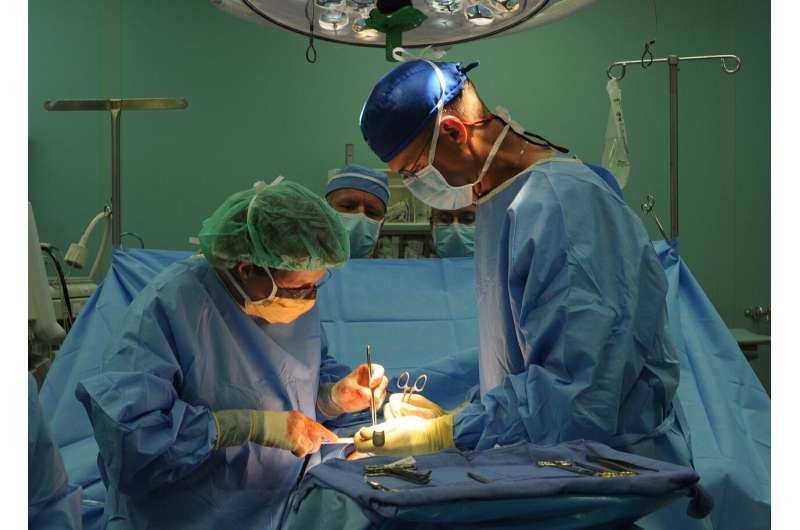Without major changes, gender parity in orthopaedic surgery will take two centuries

At the current rate of change, it will take more than 200 years for the proportion of women in orthopedic surgery to reach parity with the overall medical profession, according to a study in Clinical Orthopedics and Related Research (CORR), a publication of The Association of Bone and Joint Surgeons.
"Substantive changes must be made across all levels of orthopedic education and leadership to steepen the current curve," concludes the report by Atul F. Kamath, MD, of the Cleveland Clinic Foundation and colleagues. "Our findings support the need for changes in medical schools, orthopedic residency programs, as well as at the level of professional specialty and subspecialty societies."
Orthopedic surgery remains 'dead last in gender diversity'
The researchers queried the National Provider Identifier Registry of the Centers for Medicare and Medicaid Services, which requires clinicians to identify themselves as male or female. As of April 2020, the registry included data on 31,296 practicing orthopedic surgeons, of whom 8 percent were women. That's far lower than the proportion of women in the medical profession overall: 36 percent in 2019.
Between 2010 and 2019, the compound annual growth rate of women orthopedic surgeons was 2 percent (20 percent over the decade). Assuming this rate were sustained after 2019, it would take 217 years—until 2236—to achieve gender parity with the rest of the medical profession. Time to achieve parity with the US population—currently 51 percent female—would be 326 years, or until 2354.
The researchers also analyzed trends by orthopedic subspecialty and by region. In 2019, women accounted for 26 percent of surgeons in pediatric orthopedics and 14 percent in foot and ankle surgery, but only 3 percent in adult reconstructive surgery and 3 percent in spinal surgery. After 2019, the gains in subspecialty representation are projected to be just 1 or 2 percent, with no growth in adult reconstructive surgery.
The Midwest had the greatest growth in proportion of women orthopedic surgeons, 27 percent; followed by the Northeast, 20 percent. Rates in the West and South were 17 percent and 19 percent, respectively: less than the rate of national growth.
Dr. Kamath and colleagues call for changes throughout orthopedics to hasten the rate of change. Medical schools should offer an orthopedic surgery rotation to foster interest among women students and to help curb concerns related to work-life balance and a culture dominated by men. The authors also suggest benchmarks to increase the proportion of women trainees and faculty in orthopedic surgery training programs, particularly in the South and West; and more women among the leadership of orthopedic subspecialty societies.
In an accompanying 'Take 5' interview with Dr. Kamath, CORR Editor-in-Chief Seth S. Leopold, MD, writes: "Literally every other medical and surgical specialty has overcome this problem to a greater degree than has orthopedic surgery; we're dead last in gender diversity." He calls on his specialty to stop paying "lip service" to "the substantial absence of women from our specialty and the lack of progress towards remedying the disparity over time."
Dr. Kamath believes the orthopedic community should seek help from other fields that have been more successful in increasing representation of women: "It is not impossible to achieve gender parity; we just have to actually acknowledge that it is a problem, and then do something about it."
"We applaud these authors for highlighting this critical issue," comments Julie Samora, MD. Dr. Samora is President of the Ruth Jackson Orthopedic Society, a support and networking group for the growing number of women orthopedic surgeons. "The projection of over 300 years to achieve gender parity with the US population is alarming."
"We are missing out on outstanding talent and doing a disservice to our patients," Dr. Samora adds. "The time is now to commit to action, to have intentional efforts to increase the representation of women in orthopedics. Improving gender diversity will not only make our programs and profession better, but will also improve the overall care of our patients."
More information: Acuña, Alexander J. BS et al. How Long Will It Take to Reach Gender Parity in Orthopaedic Surgery in the United States? An Analysis of the National Provider Identifier Registry. Clinical Orthopaedics and Related Research: March 19, 2021 DOI: 10.1097/CORR.0000000000001724


















